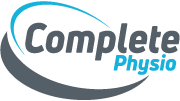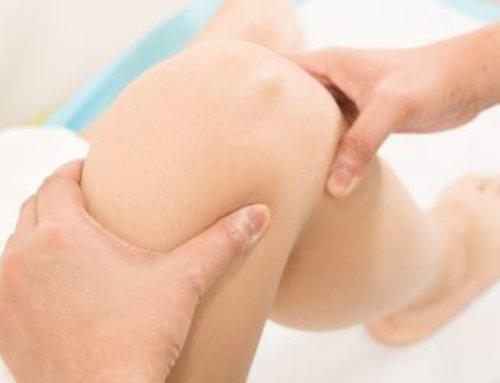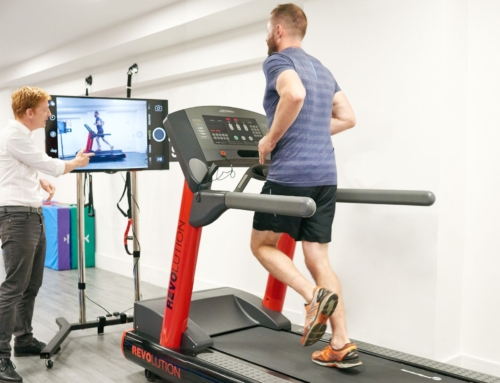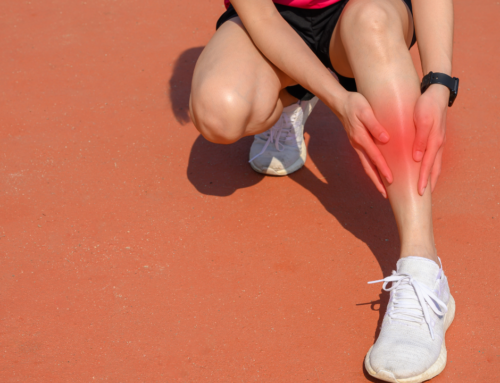Your ACJ is the joint at the top of your shoulder, between your clavicle (collar bone) and the highest point of your scapula (shoulder blade) called the acromion. The ACJ is essential; it allows overhead and across your body shoulder movements and transmits forces from the arm to your body. Several ligaments help to stabilise this joint. The ligaments include acromioclavicular, Coracoclavicular and coracoacromial ligaments.
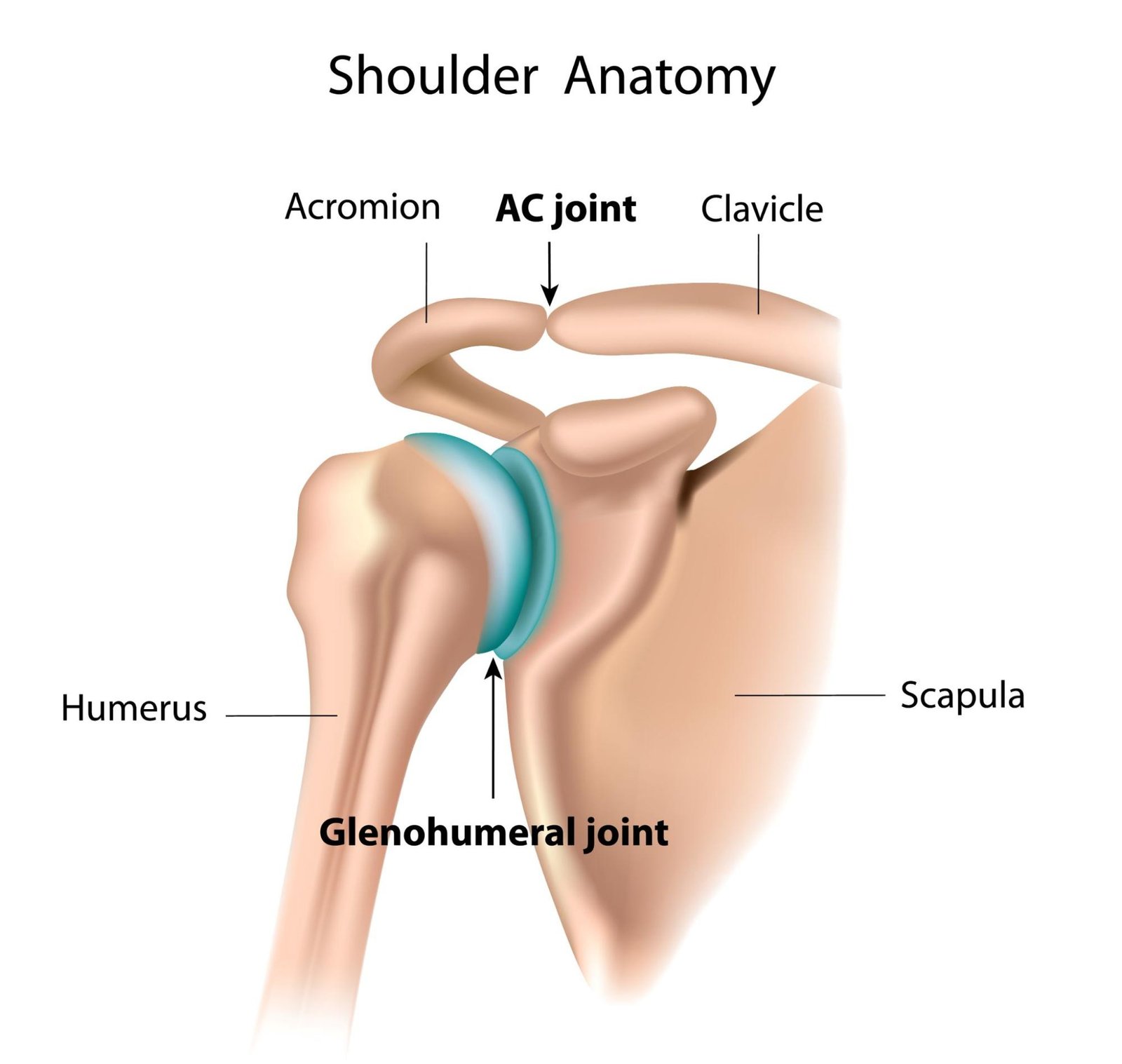
What causes ACJ pain?
Trauma – The most common cause of ACJ pain is trauma. A direct impact injury onto the front/side of the shoulder, such as a fall from a horse or bicycle, or during a rugby tackle where the shoulder hits the ground, can cause damage to the ligamentous structure of the ACJ. The extent of the injury depends on the force of the impact.
Your acromioclavicular joint may also be indirectly injured when someone falls on an outstretched arm. The contact force transmitted up through the arm causes the ligaments to be overstretched and damaged.
When the ACJ is overstretched, it causes a separation of the joint and can form a “step” or “bump” on the top of the shoulder if significantly displaced.
Interestingly, research suggests that the ACJ doesn’t fully strengthen and develop until around age 25; therefore, it is very common to see ACJ injuries in the younger population.
Males sustain five times more traumatic ACJ injuries than females.
ACJ Osteoarthritis – This is less common as the ACJ is not a load-bearing joint; however, if someone has done a job or activity involving repeated, loaded, overhead movements, then this can cause increased stress on the ACJ resulting in osteoarthritis.
Osteoarthritis tends to occur later in life, usually in patients over 50.
Muscle Imbalances – If you have not specifically injured your shoulder, with a fall, for example, and the pain just came on for no apparent reason, then it is important we discover the root cause of your problem i.e. why are you placing too much strain on the joint? This could be due to weakness or tightness in certain muscles. Abnormal mechanics of your shoulder blade or a restriction in the surrounding joints such as the thoracic spine (the part of the spine between your shoulder blades).
Rheumatoid Arthritis – or other inflammatory conditions can also be a cause of ACJ pain.
What are the symptoms of acromioclavicular (AC) joint pain?
The symptoms of acromioclavicular (AC) joint injury are:
- Pain located on the top of your shoulder with tenderness when you touch the joint
- Swelling and inflammation over the area of the ACJ
- Pain lying on your affected side
- Pain if you move your arm across the midline of your body and above shoulder level.
If you are experiencing any of these symptoms, or suspect that you have an acromioclavicular joint injury, and would like to see one of our expert physiotherapists, you can call 0207 482 3875 or email info@complete-physio.co.uk.
If you would like to speak to a specialist before booking, please email us with your details and we will call you back.
How is Acromioclavicular joint dysfunction/separation diagnosed?
A diagnosis of ACJ pathology can be made by one of our expert clinicians.
A clinical history of a fall on the point of the shoulder is common, and injuries that cause an obvious deformity are easy to diagnose.
- Watching you move your arm and shoulder overhead, and while doing other reaching tasks.
- Assessing the mobility and strength of your shoulder.
- Checking other regions of the body as needed. This will help to determine if other areas also require treatment to improve your condition.
- Gently, but skilfully, feel around your shoulder and the AC joint to find exactly where it is most painful.
If your clinician is unsure of your diagnosis, they may refer you for an x-ray, blood tests or diagnostic ultrasound imaging.
Diagnostic Ultrasound Imaging
X-rays are the gold standard in diagnosing fractures and the presence of osteoarthritis. However, Diagnostic ultrasound imaging has been shown to be as effective as MRI for assessing ACJ pathology, including both osteoarthritic changes and the presence of trauma, as well as the presence of swelling and inflammation that is often associated with ACJ pathology. A Diagnostic ultrasound scan can also assess the ACJ during arm movements, allowing the clinician to observe the joint during painful activities.
Complete has a highly skilled team of experienced physiotherapists who are all qualified musculoskeletal sonographers. On assessment, your clinician will use a combination of clinical tests and carry out a musculoskeletal ultrasound scan to provide an accurate diagnosis. If you would like more information or would like to book an appointment, please contact us on 0207 4823875 or email injections@complete-physio.co.uk.
Types of AC joint injuries
The type of shoulder separation depends on how much you tear the AC joint or coracoclavicular (CC) ligaments that hold the joint in place.
- Grade I = the AC ligament is slightly torn, but there’s no damage to the CC ligament.
- Grade II = the AC ligament is completely torn, and there’s little or no tear to the CC ligament.
- Grade III = both the AC and CC ligaments are completely torn. In this case, the collar bone separates from the end of the shoulder blade.
Three more grades of AC joint injury are also possible, but rare. These involve tearing of the ligaments and surrounding muscle tissue.
How do we treat acromioclavicular joint pain?
Acromioclavicular joint pain does not always settle without intervention. Physiotherapy and ultrasound-guided steroid injections are generally considered to be the most effective treatment modalities. It is important that you seek a specialist opinion to ensure you get an accurate diagnosis and the correct treatment.
At Complete Physio, our clinicians are movement experts. They will help to improve your quality of life through hands-on care, patient education, and prescribed movement.
Physiotherapy often involves a combination of corrective strengthening and stretching rehabilitation exercises, manual techniques including massage and soft tissue release, and postural advice.
Our goal is to get you back to full function as quickly as possible. This normally takes 4-6 weeks, depending on the severity of the injury and how long you have been experiencing pain.
Your physiotherapist at Complete will provide you with a tailored regime based on your personal profile. This will often include
- Immobilisation – If the injury is recent (within the last week) and is still very painful, we may suggest you wear a sling for a few days to allow the pain to settle down. We do not recommend that you use a sling for more than a week. This advice will be dependent on how severe the strain is. It is important that your shoulder does not stiffen up whilst the injury heals.
- Patient education – Your physiotherapist will spend time explaining about your AC joint and shoulder injury. They will work with you to identify any external factors causing your pain, including the amount and type of exercises and activities you do, and will recommend improvements and changes to your activities to reduce your pain and help you with your daily life.
- Pain management – This may include applying ice to the affected area. Also, taping the shoulder to offload and reduce the pressure on the joint can help to reduce your pain.
- Range-of-motion exercise - The mobility of the AC joint and shoulder may be limited, causing increased stress on the shoulder. Your physiotherapist may teach you self-stretching methods. These can decrease tension and help restore the normal motion of your injured joints.
- Manual therapy – These techniques help to improve movement. Your physiotherapist may use manual therapy to help guide your shoulder into a less stressful or painful movement pattern. It may also include some soft tissue release techniques for the surrounding muscles.
- Muscle strength - Muscle weaknesses or imbalances can cause or contribute to problems of the AC joint and shoulder. Depending on the severity of your injury, your physiotherapist will design a safe resistance program to aid your recovery.
- Functional and sports-specific training - Once your pain, strength, and range of movement improves, functional training can help you safely resume more demanding activities and get you back to playing the sport that you love.
Throughout your treatment at Complete Physio, we will keep revisiting your personal goals, so that we maintain the focus on making your life easier and ensuring that you feel supported and involved in your rehab process.
We are dedicated to getting you back to full function and we have the correct skills and knowledge within the practice to ensure this goal is achieved.
Your physiotherapy treatment will aim to:
- Reduce pain and inflammation.
- Normalise joint range of motion.
- Strengthen your shoulder.
- Improve your shoulder blade and shoulder alignment.
- Normalise your muscle lengths.
- Improve your upper limb proprioception.
- Improve your technique and function, e.g. lifting and overhead activities.
- Minimise your chance of re-injury as you return to sport or work.
Ultrasound-guided Steroid Injection
If the pain does not settle, then an ultrasound-guided steroid injection is an effective treatment for AC joint pain. Following an injection, we always recommend that you complete a course of physiotherapy. This helps to gain further improvements in pain, range of movement and shoulder strength.
At Complete, we provide a comprehensive, one-stop clinic for ACJ pain, from diagnosis to treatment, including ultrasound-guided injections. All these treatments can be carried out within our London clinics, which means you don’t need to visit different specialists. Our one-stop service also makes your treatment more affordable and accessible.
Surgery
Surgery is sometimes recommended for ACJ conditions. If this is required, your Physiotherapist will be able to refer you to the correct consultant, to ensure you get the best possible care and outcome.
A physiotherapy-guided rehabilitation programme will be needed following surgery to restore the full range of movement to your shoulder.
Don’t let pain hold you back, book now!

